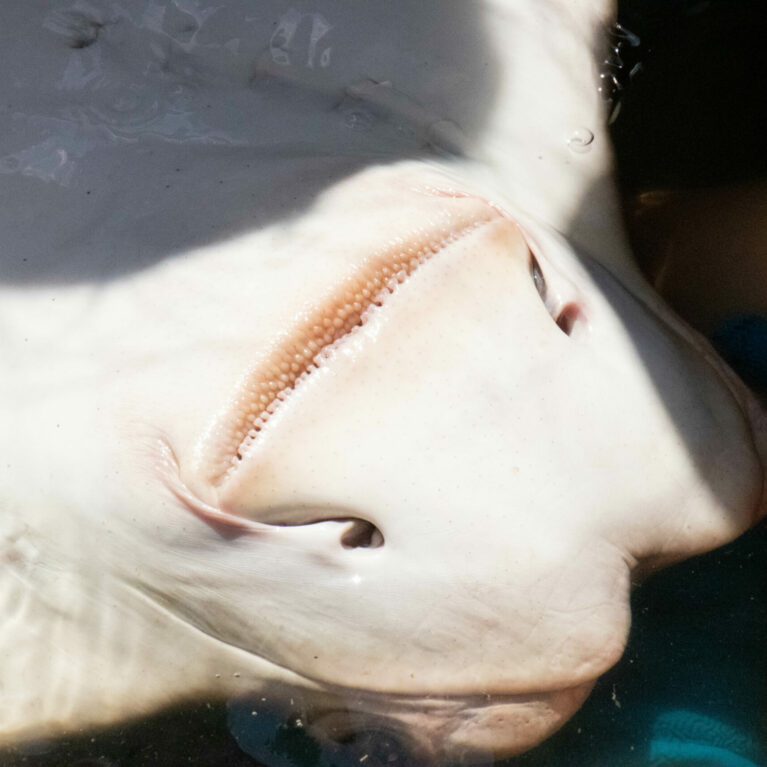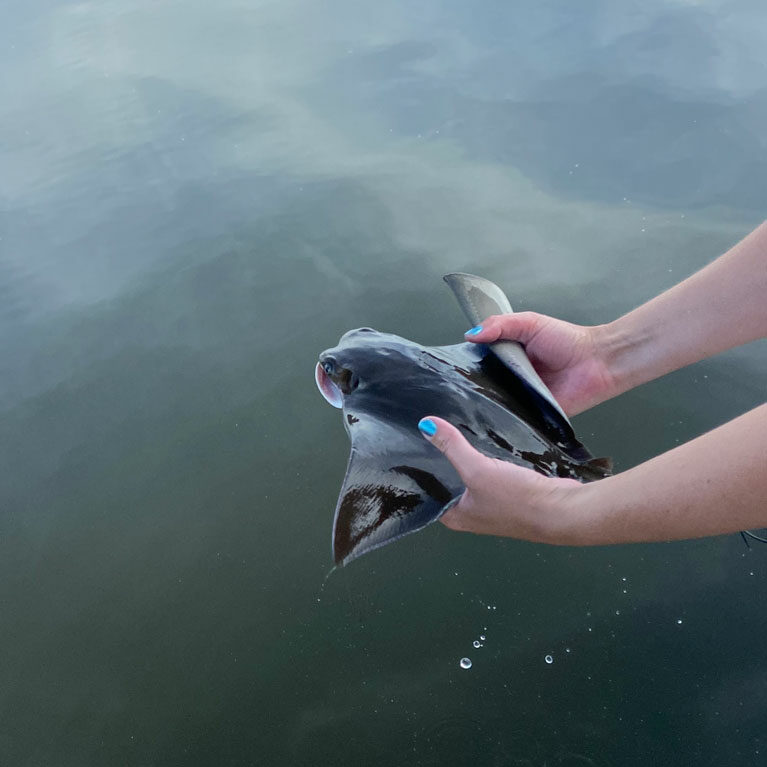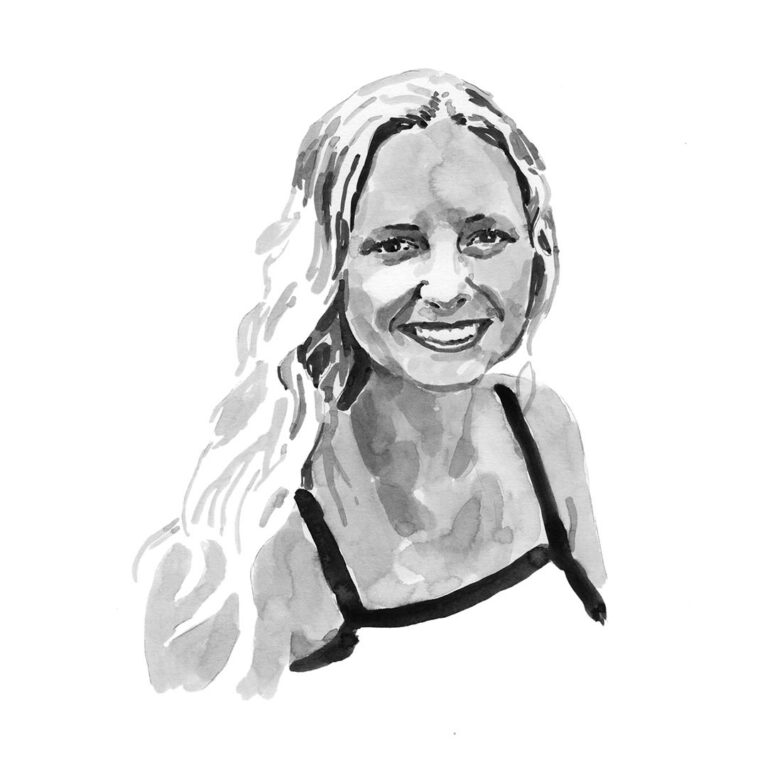Does habitat-use change with age for cownose rays?
Ashley is catching cownose rays to tag them with an acoustic transmitter and using the network of listening stations established in her research area to passively track where the rays move through their different life stages. Ashley works in Apalachicola Bay, a large and highly productive estuary in the north-east Gulf of Mexico that is also a biodiversity hotspot and federally-designated National Estuarine Research Reserve. Her study on the movement patterns of these rays, which are highly migratory and vulnerable to overfishing, comes at an important time after an unregulated fishery has led to the population’s collapse.
In 2005, the Georgia Aquarium opened in downtown Atlanta near where I was growing up and I convinced my parents to get us an annual pass. I soon became enamoured of this underwater world I had never seen before, including the diverse array of behaviours of the animals I could now observe. Before starting my undergraduate course, I volunteered at the aquarium at every opportunity. I would spend hours talking to guests about what was happening in the tanks or what these species’ lives are like in the wild, which gradually turns into what we can do as...


Ontogenetic Changes in Habitat Use of Cownose Rays in Apalachicola Bay, Florida
The main objective of this study is to define the spatial use habits of cownose rays in Apalachicola Bay, Florida, in a bid to provide the opportunity for effective species management while guiding efforts in local oyster restoration projects.
The Atlantic cownose ray is highly migratory and vulnerable to overexploitation. It has become difficult to manage this species due to limited behavioural data in the Gulf of Mexico. Historical implication in the collapse of several fisheries led to an unregulated cownose ray fishery with immeasurable population effects. As oyster restoration is becoming heavily pursued, now is a crucial time to launch a ray movement study to clearly define the potential interaction between rays and oysters.
The cownose ray is an extremely vulnerable species, due to the fact that individuals reach maturity at the age of four to five years and then only give birth to one pup each year. When a population declines, it therefore takes a long time to recover. While detailed movement studies of this species have been conducted along the eastern US coast, movement and space use data in the Gulf of Mexico are limited, contributing to the fact that no official stock assessment has ever been carried out. As key life-history traits differ between populations in the Atlantic and Gulf, it is likely that there are also behavioural differences in their movements and use of space. There are no existing data regarding seasonal residency or movement of cownose rays in Apalachicola Bay. However, it is likely that they are affected by fishing pressure from shrimp trawls during their seasonal window of bay use. Cownose rays are considered meso-predators, eating primarily hard-shelled invertebrates such as clams and oysters, and are preyed upon by larger species of sharks. Reports of cownose rays depleting commercial oyster stocks in Chesapeake Bay, although challenged in the literature, led to the creation of a large and unregulated cownose ray fishery as pushed for by commercial fishermen, dubbed the ‘Save the Bay, Eat a Ray’ campaign. In the absence of an official stock assessment, impacts from this fishery were immeasurable, which is particularly jeopardising for a species so vulnerable to overexploitation. It is dangerous to allow crucial data gaps regarding spatial use and migratory habits to linger, especially in highly migratory meso-predators that are interacting with several different ecological habitats over different life stages.
The aims of the project are:
- To define the extent of the cownose rays’ seasonal habitat use of Apalachicola Bay, including the timing of when they enter and exit the bay each year. This information will fill data gaps that inhibit species management;
- To identify changes in the cownose rays’ core habitat preferences and use of space over various life stages to guide future management strategies and commercial oyster fishery restoration efforts. Defining changes in proportions of habitat use between sea-grass, oyster and mud habitat in the bay as individuals age will give a rough idea of the potential prey items they are eating at different ages;
- To determine if and to what extent Brazilian cownose rays are using the bay habitat and whether the Brazilian and Atlantic species are mating with each other. The Brazilian cownose ray looks identical to the Atlantic cownose ray. We only recently discovered that the geographic ranges of these two species overlap, which introduces management concerns for each species. It is important to identify whether both species are present in the bay; if so, genetic analysis will reveal whether these closely related species are mating. This information is critical to inform biologically accurate stock assessments in the future.
RESULTS:
This project has revealed a lot of interesting information about the species, including locating a pupping and mating area that has been used repeatedly for multiple consecutive summers. Tracking data has also revealed unique movement and habitat use patterns across sex and life stage.
Understanding ecological dynamics within this critical ecosystem is essential to the long-term conservation of species in the community. This study aimed to describe the movement behaviour of cownose rays throughout the Apalachicola Bay system, including seasonal presence, changes in habitat use across sex and life stage, and assessment of cryptic species presence. Movement data will be collected until Summer 2024. There is still a strong need for further investigation of cownose ray movement behaviour and ecology in the Gulf of Mexico. Additional knowledge gained about the species through studies such as this one can provide new insights into species behaviour that can be used in potential future species assessments and conservation initiatives.

